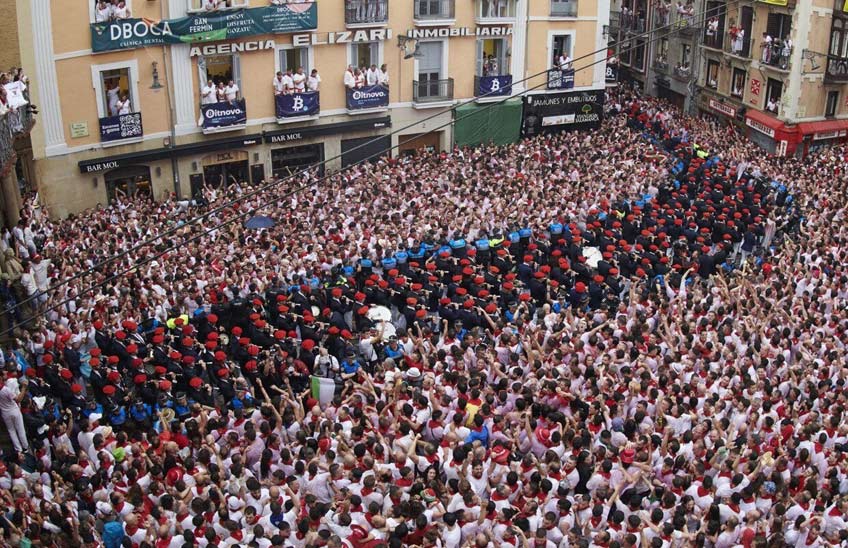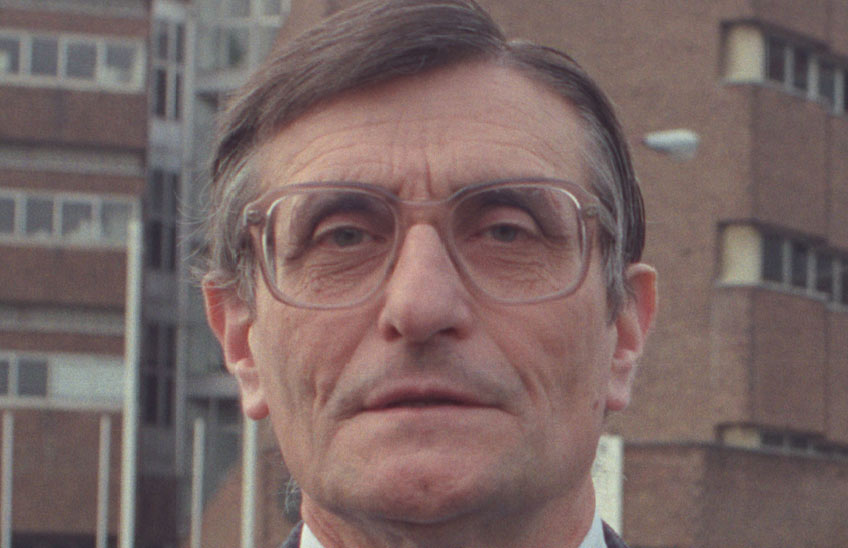A study on the Sanfermines concludes that the behavior of crowds at mass events can be predicted
International research , published in 'Nature' and involving scientists from the University, could reduce risks in crowds such as concerts and festivals.

05 | 02 | 2025
research carried out over four years during the San Fermin festival has concluded that the collective movement of large crowds can be predictable, as long as the density of people in the area is sufficiently large. The study, published in Nature and in which scientists from the University of Navarra have participated, could help to predict the behavior of people in concerts, festivals, etc. where mass movement can pose a great danger and cause situations of crushing, suffocation and even death.
The findings were based on four years of observations (2019, 2022, 2023 and 2024) during the moments before and after the Chupinazo, the rocket that is launched every July 6 in the place Consistorial of Pamplona and that starts one of the most important festivals in the world. The work, carried out by researchers from the University of Navarra led by Full Professor of Applied Physics Iker Zuriguel and from the École Normale Supérieure (ENS) of Lyon (France), led by Professor of Physics Denis Bartolo, tracked the movement of approximately 5,000 people, using cameras placed at two observation points in the place, which is 50 meters long and 20 meters wide.
Through their images and a mathematical model , the authors found that the density of the crowds increased from two people per square meter, one hour before the Chupinazo, to six people per square meter at 12 noon, the moment of the launch. In addition, they found that at certain times and places, densities of up to 9 people per square meter could be reached.
"When the density is above about 4 people per square meter, there are oscillations in the movement of people. Contrary to what was thought, this movement is not chaotic but periodic. When it reaches 4 people per square meter, the crowd starts to behave like a fluid that oscillates describing orbital movements, either clockwise or counterclockwise, but with a period of 18 seconds", explains Zuriguel, professor and researcher at the School of Sciences of the University of Navarra.
According to the physicist, "the curious thing is that the period of these oscillations depends on the size of the place. We have measured the oscillations that appear when the police split the place in two for the pipers to come out and found that the period is different (smaller) on each side of the place," he points out.
Helping to prevent tragedies like the Love Parade in Duisburg
The authors compared the images of the San Fermin festival with those of the 2010 Duisburg Love Parade in Germany, a festival during which more than 600 people were injured and 21 lost their lives. The researchers found that when the Duisburg crowd reached a similar density to that of the San Fermin festival, the same oscillations were observed. Therefore, this finding provides information on how to anticipate the behavior of large crowds in confined spaces.
The article published in Nature, graduate "Emergence of collective oscillations in massive human crowds," highlights that dense crowds, such as those that occur in this subject events, can be a great danger, as hundreds of people move en masse in the same direction. "Understanding how people move in these scenarios can help prevent tragedies. However, until now these dynamics have been difficult to describe or model, especially due to the lack of repeatable and safe experiments at this scale," says Zuriguel.
The study is part of the 'San Fermín Crowd Lab' project and the Pamplona City Council is collaborating in it, with which an agreement was signed to install the cameras that monitor the dynamics of flows in the Chupinazo, as well as in other scenarios of Sanfermines. The goal of this agreement is to achieve high-precision measurements of the movement of people in high-density situations in San Fermin to increase public safety.

